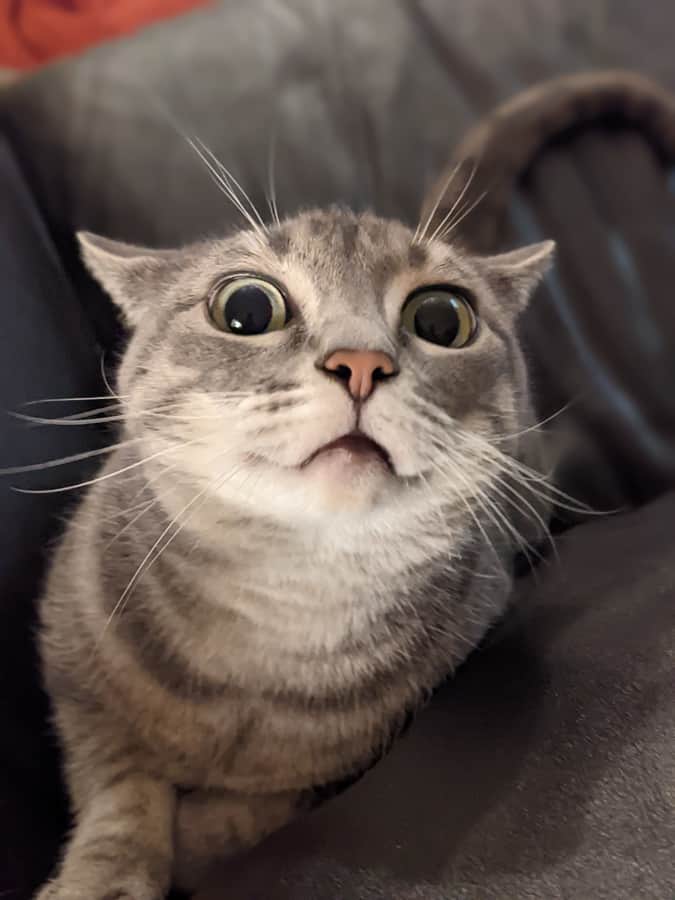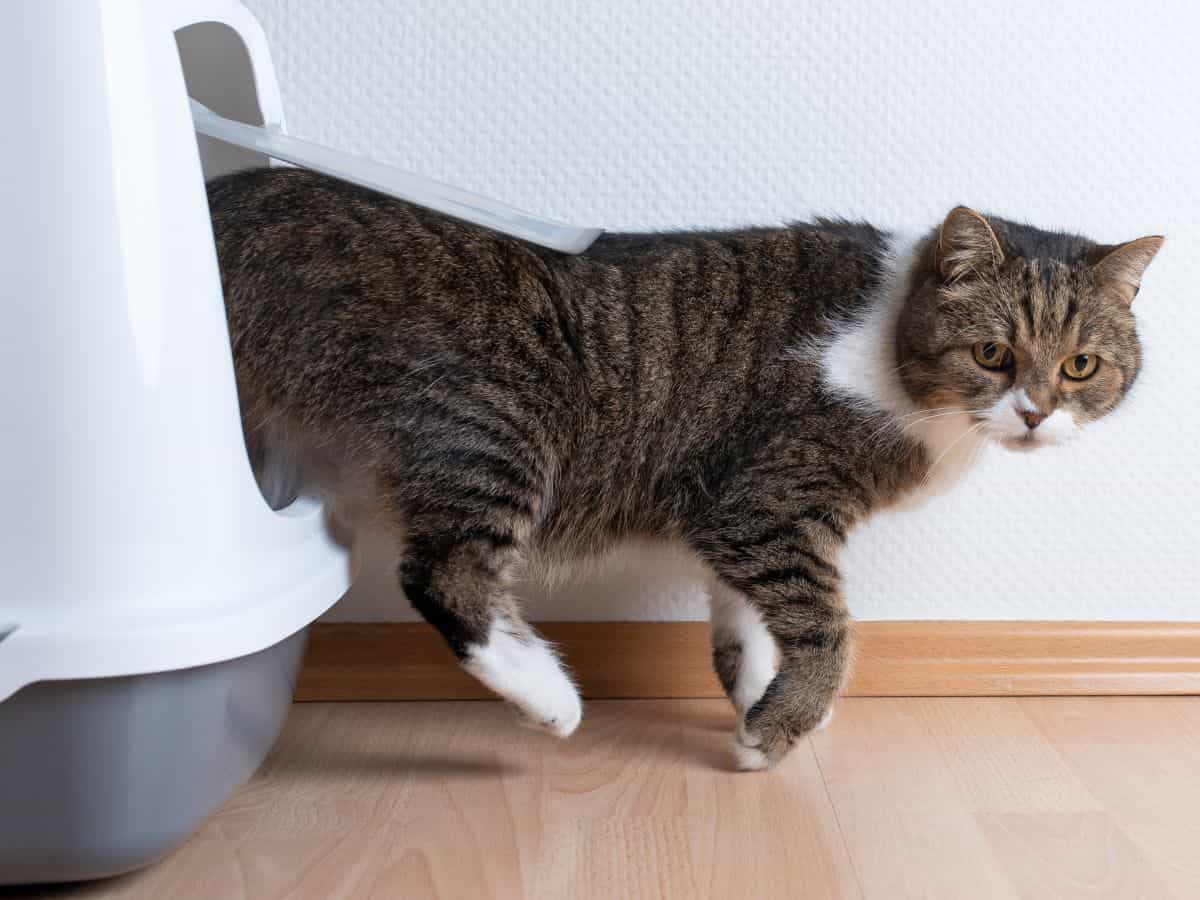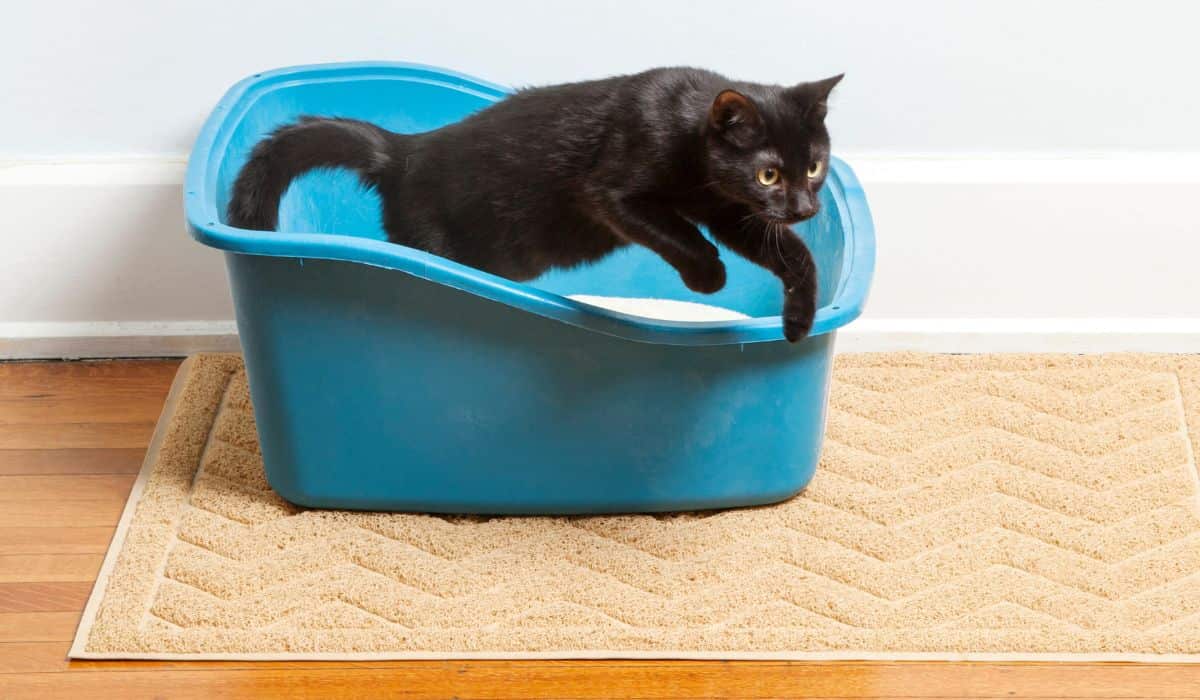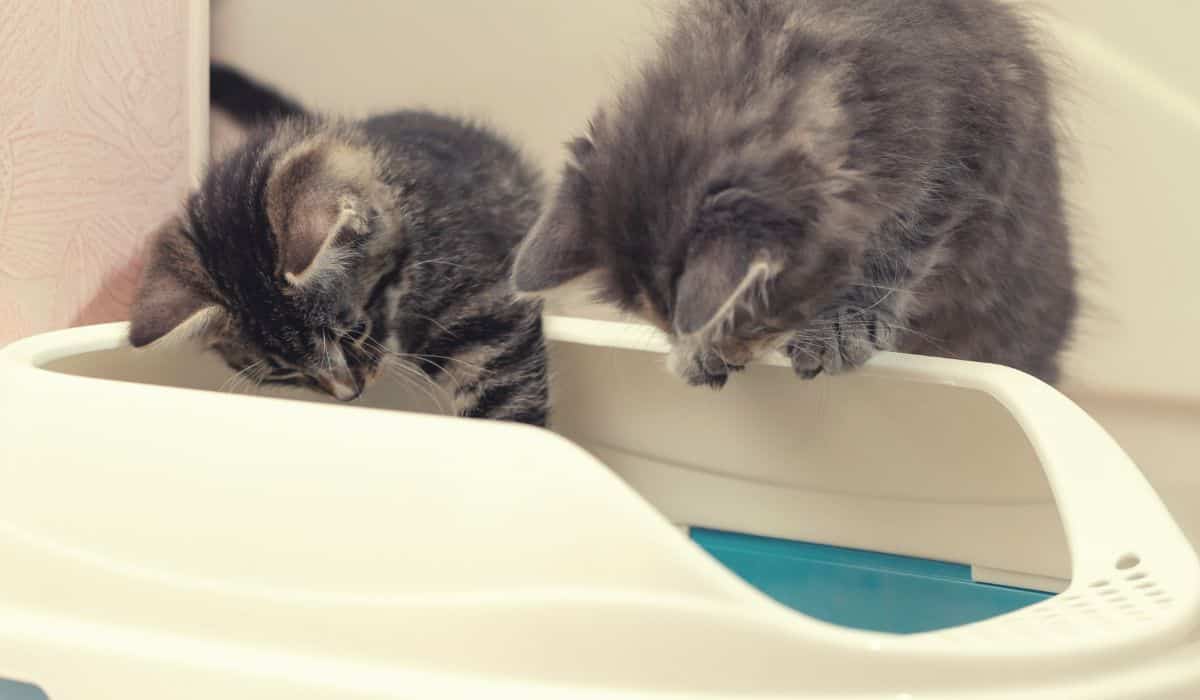Cats are an interesting study in contradictions.
Cats love to sleep, a lot. They spend a solid chunk of their day lounging around. Cats also have short spurts of intense energy, known fondly as “the zoomies”, where they run around the house like something is after them.
One trigger for this burst of activity for some cats is immediately after using the litter box. So, what’s going on here?
Why do cats get the zoomies after using the litter box? Cat experts have a few theories about what prompts your cat to race out of their litter box.
What are the “Zoomies”?
Before we delve into the reasons why cats get the zoomies after using the litter box, let’s first take a closer look at this behavior. The zoomies, also known as “frenetic random activity periods” (FRAPs), are sudden bursts of energy and activity that cats often display.
During a zoomie episode, a cat may run around the room, jump on and off furniture, and generally behave in an energetic and playful way.

Zoomies can occur at any time, but they are often seen in kittens and younger cats. They may also be triggered by certain stimuli, such as a favorite toy, the presence of other cats, or the sound of a treat bag.
Two of the most common times for cats to display the zoomies are in the early evening and after using the litter box.
Why Do Cats Get the Zoomies After Using the Litter Box?
There are several theories as to why cats get the zoomies after using the litter box. Let’s take a look at some of the most popular explanations:
Using the litter box gives your cat a sense of relief
One possible reason why cats get the zoomies after using the litter box is simply because they feel a sense of relief and release.

Using the litter box is a natural bodily function, and it’s possible that cats feel a sense of satisfaction or pleasure after completing this task.
This sudden release of energy and positive emotion may cause them to run and play, much like a child who has just finished a big project or task may feel a burst of energy and want to run around and play.
For the most part, this burst of happy energy in response to the relief of using the litter box. If your cat seems to be straining to poop, seems constipated, or is showing any other signs of discomfort, you should consult with a vet to make sure there aren’t any underlying health issues.
Your cat may have some poop stuck on them
Cats are fastidious groomers and they will ingest other that are stuck on their fur and paws. Sometimes this can be long strands of human hair. When your cat uses the box, the poop may be clumped around that hair.
This can sometimes result in the poop dangling outside your cat’s behind instead of dropping into the litter box. The sensation may send your cat into a panic. And when a cat panics, they run in an attempt to flee whatever has scared them.
So, if your cat seems to be unusually frantic after using their litter box, try and grab them and see if there is anything stuck to their behind. If there, apply some warm water to some paper towels and remove the offending item and clean up their rear.
Your cat may feel the urge to mark territory after using the litter box
Cats are known for their territorial nature, and they often use scent marking as a way to stake their claim on an area or object. It’s possible that after using the litter box, cats feel a sudden urge to mark their territory and spread their scent.

They may do this by scratching at furniture, rubbing their scent glands on objects, or simply running around and spreading their scent through movement. This could be one explanation for why cats get the zoomies after using the litter box, as they may feel a sudden need to mark their territory and assert their dominance over the space.
Using the litter box is stimulating your cat’s desire to play
Another possible explanation for why cats get the zoomies after using the litter box is simply because they are feeling playful and energetic.

Cats are known for their love of play, and they may use the sudden burst of energy that comes after using the litter box as an opportunity to engage in some physical activity. This could be especially true for younger cats or kittens, who may have a lot of excess energy and a natural tendency to play and explore.
Your cat may be relieving stress from using their litter box
Using the litter box can be a stressful experience for some cats, especially if they are dealing with issues like litter box aversion or anxiety.
It’s possible that the sudden burst of energy that cats display after using the litter box is a way for them to release some of the stress and tension that they may be feeling. This could be a way for cats to cope with the stress of using the litter box and release some of that built-up anxiety through physical activity.
Your cat’s litter box is causing sensory overload
Cats have a heightened sense of smell, and the litter box is one of the areas in your home where they are exposed to a lot of different smells. Litter boxes in multi-cat households contain the smells of their housemates, and with that, any positive or negative feelings about those felines.
It’s possible that the sensory overload that cats experience after using the litter box can trigger the zoomies.
The sudden burst of energy and activity may be a way for cats to release some of the tension that they feel when they are exposed to a lot of different smells.
Zoomies after the litter box is a survival instinct
Finally, some experts believe that the zoomies may be an evolutionary behavior that is hardwired into cats. In the wild, cats need to be able to move quickly and effectively to catch prey and avoid predators.
Answering the call of nature puts the cats into a vulnerable position while they are urinating or defecating. The sudden burst of energy and activity that they display after using the litter box may be a way for them to stay sharp and agile in case they need to move quickly to defend themselves or chase after prey.
The smell of poop can also attract predators so racing away from the litter box is also a survival instinct. If you have tension between cats in your household, your cat may race to use the litter box to avoid getting attacked by another cat.

Overall, there are several different theories and explanations for why cats get the zoomies after using the litter box. While we may not know exactly why this behavior occurs, it’s clear that it is a common and normal behavior for many cats. As a cat owner, it’s important to be aware of this behavior and to ensure that your cat is safe and not at risk of injuring themselves or damaging your home during a zoomie episode.
Tips for dealing with the zoomies after using the litter box
If your cat is prone to getting the zoomies after using the litter box, there are a few things you can do to help manage this behavior.
Here are some tips to keep in mind:
- Provide plenty of toys and play opportunities for your cat. This can help them release their excess energy and prevent them from getting the zoomies as frequently.
- Make sure your home is cat-proofed to prevent your cat from injuring themselves or causing damage during a zoomie episode. This may mean removing fragile objects, closing off certain areas of your home, or providing safe spaces for your cat to play.
- Consider using a litter box with a lid or cover to help contain the smells and prevent sensory overload. This may help reduce the frequency of zoomie episodes.
- Avoid the use of highly fragranced litter box deodorizers. Those scents can overwhelm your cat’s olfactory system and cause them to go into sensory overload. Instead, use natural deodorizers like an open jar of vinegar or an open box of baking soda placed on a shelf nearby.
- Provide enough litter boxes if you have a multiple-cat household and clean them daily. Cats do not like to use litter boxes that are soiled.
- Make sure you litter boxes are in safe locations. Place the litter boxes in a quiet part of the house and in a way that your cat doesn’t feel like someone can sneak up on them.
- Monitor your cat’s behavior and look for signs of stress or anxiety. If you notice that your cat is displaying the zoomies more frequently or seems to be struggling with litter box issues, it may be a sign that they are dealing with stress or anxiety. In this case, it’s important to work with your veterinarian to identify the root cause of the problem and develop a treatment plan.
Zoomies are a normal activity for cats
In conclusion, the zoomies are a common and normal behavior for many cats, and they often occur after using the litter box. While the exact reasons why cats get the zoomies are still unknown, there are several theories and explanations that may help shed some light on this curious behavior.
As a cat owner, it’s important to be aware of this behavior and to take steps to ensure that your cat is safe and happy, even during a zoomie episode.






